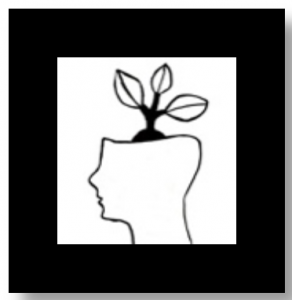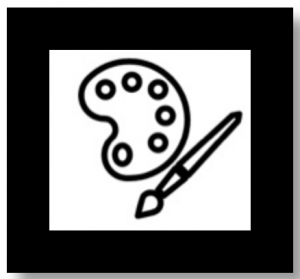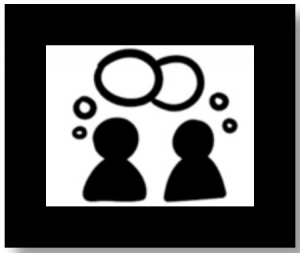Chapter 1 – Why do we need a superpower?
Once we believe in ourselves, we can risk curiosity, wonder, spontaneous delight or any experience that reveals the human spirit. E. E. Cummings
What if every classroom you walked into had children in deep discussion, moving around with a purpose, engaged in a meaningful task, and all the solutions they were finding looked plausible yet all different? Perhaps, you would be walking into a classroom of the future, or just one in the 21st Century, where every student was gaining a superpower – that of creativity so every child was able to learn to their fullest potential and have fun doing it.
Why do we need a superpower? Everyone needs a superpower, so we can feel confident in ourselves. Having a superpower is a strength that we can build upon, and it helps us become competent in our abilities. The hard part is finding one that fits one’s personality, one’s strengths, and one that is purposeful and fun. Creativity can be everyone’s superpower.
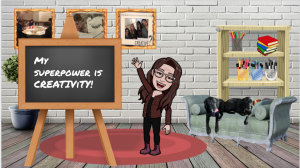
To begin the journey of finding and using one’s superpower of creativity, we must all work and talk together to truly understand what creativity is. We must ask questions, we must reflect on our own strengths and think about ways we have an impact in the world. We must try things out with both successes and challenges, so we understand the possibilities. Then we can use this to impact our own work and those around us. The mere act of finding a superpower and acting on it can be a transformative experience. This chapter will explore the needs of 21st-century learners and the possible ways to get there and how having a superpower can help. The following sections in the chapter will help the participant go deeper into their own understanding of creativity, ways to see other’s creativity, how the local context and community can enrich one’s creativity, and ways to demonstrate and document creativity.
Examples
Superpower Story #1
Kindergarten – Whole Group
Ms. Evans was sitting at the front of the classroom in a rocking chair reading a version of The Three Little Pigs titled The Three Little Wolves and the Big Bad Pig by Eugene Trivizas as part of the fairy tale unit that integrated reading and engineering together. All the children were sitting on a rug on the floor with eager expressions on their faces. The teacher and the children were stopping every few pages to dig deeper and to ask questions. The teacher was very aware of the Common Core standards that she needed to address such as Answering who, what, where, when, why, and how questions about stories and books and describing the reasons that an author gives to support a point. In addition, the teacher was asking “building” questions about the structures that the wolves were building. After finishing the story, Ms. Evans asked all the children to find a good working group of four students. She asked them to make good choices for this group and to consider people that might think differently from yourself, someone you work well with, and someone you enjoy “hanging-out” with. She then said they had 1 minute to make good choices and find a group. (note: the teacher had previously practiced this exercise of forming groups in the past with success). All children created their own groups of four within the 1-minute time frame.
Small-Group
In the small groups of four, the children were given their task and 30 minutes (on a timer in the front of the classroom).
- Construct two houses – a weak house that they could blowdown and a strong house that they could NOT blowdown. Children were provided with a bunch of open-ended materials from the workshop area (items included things such as cardboard, paper, popsicle sticks, glue, tape, etc.) or they could write, draw or ask for additional items they wanted.
- Create a design plan (draw pictures or write directions) for both houses.
- Share and demonstrate the strength of their houses to the whole class.
The small groups each went different directions – below are excerpts from three of the six groups.
Small group #1 – Bobby told everyone to pick what they wanted to do [individually] – one would build a strong house, one a weak house, one would write up the instructions and the fourth would share. What really happened was Bobby tried to build a strong house, Sarah built a weak house, James watched both Bobby and Sarah and drew a design plan of both and Marisol waited (and read an unrelated book) and later shared out what they did. Both houses collapsed. The design plan was very carefully drawn with clear instructions for both houses and Marisol gave only a brief overview of what their group did without many details as to why the houses fell.
Small group #2 – children in this group discussed the problem of building a weak and strong house. Zack said over and over, “I know how to do it.” The other three children decided to let him build the houses. The houses continuously fell down (he was good at weak houses). A quieter child, Mark, stepped in on the third try and asked to help with the construction by adding supports. The third and fourth children, Conner and Jacob, started building their own structures but started to watch and listen to the quiet child, Mark. Once the house was completed, Conner and Jacob decided to create a poster together to share how they were built. The poster was very detailed with pictures of all the collapsed houses. If there was a recording, there would also be a lot of giggles. All four tried to share about the houses and talk together in the sharing with the whole class.
Small group #3 – This group was made up of four girls, Mariah, Baily, Abigail and Karen. This group had worked together before and already had a plan for collaboration. They began by discussing and reflecting. Mariah facilitated the conversation and Abigail collected items. Baily and Karen asked questions and tried out a few ideas. After both Baily and Karen couldn’t make their structure stand the way they wanted it to, they started brainstorming other items that would be stronger and different ways to build a house. They decided they needed different materials than what is in the classroom and Abigail asked the teacher for the additional items including an iPad. After getting the supplies from the office and art classroom, together they built the houses. Abigail photographed the structures and their group while they were building the houses, with the iPad. Karen and Baily shared to the whole class how they built the houses and Abigail showed the photographs.
Superpower Reflection questions:
- How did the teacher support critical thinking in the classroom?
- How did the teacher support creativity in each child and each group?
- How did the teacher support collaboration and community building?
- How could the teacher communicate and promote ways to make the learning visible?
- How did the teacher encourage each child’s superpower?
Think about it! – Critical Thinking and Reflection
What is Creativity?
After reading the above classroom story, what types of creativity were expressed by the children? How did the teacher support the students on their own creative journeys? Have you ever worked in a small group and given a task that needed a creative solution? Creativity is a way to have an open mind, a way to be flexible in your thinking, and a way to feel safe to try out different possibilities. By having opportunities with some direction and support, innovation and creative thinking are encouraged. The classroom is a place to promote and even expect creativity.
Creativity is a way of looking at a problem – imagining and reimagining ways to solve the problem; expressing and creating a way to answer to the problem; then sharing one’s solution and then reflecting back and asking the question, “did I solve the problem?” Together, this process supports 21st Century Learning and Innovation skills.
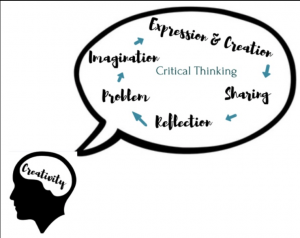
Schools should support and encourage students to think creatively and to be critical thinkers. According to Forbes magazine, The World Economic Forum reports that you need the ten skills listed below to thrive in 2020: (only the top four are listed).
- Complex problem-solving.
- Critical thinking.
- Creativity.
- People management.
This is a change from 2015 where creativity was listed as #10 according to the Future Work Skills 2020 report that was facilitated by the Institute for the Future.
Why do we need a superpower in the 21st Century?
Having a superpower means you can stretch your own limits, you can meet and exceed the expectation. Having this extra ability helps us to feel special, to have strength, and a sense of confidence.
The Mission Podcast blog talks about what a superpower is.
So, what are Superpowers anyways? On the surface, there’s no simple definition because these abilities vary from person to person, but they do seem to have two things in common: first, they seem only to surface in an ‘open space’ where few rules apply, and second, they are abilities that we tend to surround with strong feelings of insecurity.
They go on to say the number one reason we don’t embrace superpowers is:
Number 1 Reason: Schools are not fertile ground!
Most of our school systems are highly structured, emphasize the acquisition of formal knowledge across a range of subjects, and manufacture motivation with grades.
If students are in these highly structured environments for long periods of time (13 years???) then surely, their superpowers, particularly that of creativity will be squashed!
P21 The Partnership for 21st Century Learning is a coalition made up of business leaders, educational leaders, and policymakers who have created some position statements and frameworks for thinking about education in the 21st Century.
P21’s mission is to serve as a catalyst for 21st-century learning by building collaborative partnerships among education, business, community, and government leaders so that all learners acquire the knowledge and skills they need to thrive in a world where change is constant and learning never stops.
P21’s framework for learning includes different outcomes for students including Content Knowledge, Career and Life Skills, Information, Media and Technology, and Learning and Innovation Skills – the 4Cs.
This book is structured in a way to highlight and demonstrate the 4 Cs. Each chapter will have four parts that each highlight one of these C’s.
The 4Cs!!! – Learn them…
- Critical Thinking
- Creativity
- Collaboration
- Communication
How do we get a superpower?
To get a superpower, one can’t just go to the store and buy one, nor do most have a Fairy Godmothers that can grant one – unfortunately. Some people are born with a superpower such as having extreme mathematical skills, superior speed in running or artistic talent. Some people have the means to gain experiences (special schools, training, or gifts) that may give some an edge or special ability at a skill. Most of us fall under the more typical category or having many strengths and some weaknesses that help us find our callings in life. Teachers, parents, friends all help us cultivate these strengths in different manners. One superpower that all of us can find, strengthen, and grow is creativity through our imagination, experience, and environment. As Albert Einstein was quoted in Viereck’s book in 1929, “Imagination is more important than knowledge”.
Critical Thinking and Reflection thoughts
As we walk into classrooms today, we should look around, listen, and observe how are teachers, environments and school district policies promoting imagination, exploration, innovation – and creativity. Some school districts are starting to embrace this type of learning and/or models that support creativity. Models might be called, Project-based learning (PBL), Inquiry-based learning, Place-based curriculum, Reggio Emilia Inspired to name a few. When students, children and adults have opportunities to feel safe, to try new things, to experiment they become more confident and component in themselves as a learner. Their critical thinking skills expand.
After reading the above sections, think about your own creativity. Think about your school experiences, your family experiences, your community experience. Did they promote creativity? If they did, how? Instead of saying “are you creative or not?” – reframe the question to “how am I creative?” Try the making challenge below to see how you are creative.
Play with it! – Creativity and Culturally Relevant – Make it! Do it!
Making Challenge – Mixed Media Collage
Think about who you are, your values, your interests, your culture. How do these assets blend, contribute, and enhance your experience with those around you? How can you build on these and see these similarities and differences as strengths to a group? Together, create a collage that represents your group (3-5 people).
Supplies
-
- Large table or floor area and open-ended art supplies (glue, fabric scraps, magazines, paint, markers, other found items)
- Notepad and writing implement (for quick notes and brainstorming)
- Large piece of butcher paper, cardboard or wall space for active use (could be a bulletin board)
Process
-
- Individually – brainstorm things about yourself that are important to you (interests, hobbies, ethnicity, cultural traditions, etc.)
- Small group of 3-5 – share your brainstorms.
- Identify similarities and differences
- Create a joint collage or mural that represents the small group using the open-ended materials
- Large group – share the collages and how they are important to your group.
]ntegrate it! – Collaboration and the Community
How do we integrate content?
Just as the Merriam Webster’s definition states, “to form, coordinate, or blend into a functioning or unified whole.” If we combine different content areas such as reading and social studies, we can have a richer experience with both contents and therefore, creating a “whole”. Holistic learning takes place when contents are integrated together According to, John Miller, from the University of Toronto (2007), “holistic education is founded on three basic principles: balance, inclusion and connection.” When we learn to create this sense of whole, student thinking is enriched. To do this, we must learn to work together so we can build on each other’s strengths as well as bring our own sense of individualism to the project.
What is the role of collaboration?
Collaboration is key in this work to make it successful. When small groups work together with a common goal in mind, participants are learning how to work effectively and respectfully together. As anyone who has ever worked on a team before knows, there can be challenges as well as great rewards. This is dependent on how the project is set up, how the project is rolled-out, how the project is assessed and evaluated, and how the people in the group are respected. Laying some ground rules together about expectations is very important. Group members should be able to work to their strength so that the work is fair but not always equal or the same. Read the classroom story above to further understand how the work distribution may be fair but not equal or the same.
OurPlace Project
The OurPlace Project will provide an example, one that small groups participate and collaborate in together. This project will highlight ways to integrate the content in a simple fashion.
OurPlace Challenge – OurPlace
Find an OurPlace (approximately 1Meter sq.) in a small group outside – Name it
Supplies
-
- Yarn in 1-meter lengths or meter sticks
- Clipboards with paper and markers
- Camera or iPad or phone camera
- Optional: Map of area (if you have one and want to limit the distances) or have a mapping activity connected
Process
-
- Discuss the OurPlace project with the whole group.
“We are going to find a place (give parameters) that we will visit regularly. This is going to be your group’s special place. You will name it and visit it regularly. We will be doing some special things in this place every week. So, keep an eye on it.”
-
- Once you have your group, you will go find a place outside that you all can agree that you like. Look for things that are interesting in the place such as a bush, flowers, rocks, etc. Measure a square meter (demonstrate how to do this in the classroom) and this will be your “OurPlace”. Your group should come up with a name of the OurPlace. Everyone needs to draw a picture of the OurPlace. (You may want to give a short lesson on perspective depending on the age group of the children. You might also want to mention that the drawings will look different if you are standing in a different place looking at it.) Take photos of the OurPlace from different perspectives. We all see things from our own lens.
- Bring materials outside: clipboards, paper, markers, cameras
- Find the OurPlace and measure it off with either the meter sticks or the meter length of yarn. Depending on the place, you could use chalk or sticks to identify it. The places should be marked on a large map that is hung in the classroom, so the other students know where the other OurPlaces are.
- Do a quick sketch and take a photo of the OurPlace before coming into the classroom.
- Once back in the classroom, have the small groups compare their drawings to see what each saw in the place. Brainstorm different names for the OurPlace. Create a group sign
- In a large group, have each group report where their OurPlace is, mark it on a large map, and share the different elements they saw in their place and share their name.
Integrated Curriculum Areas
English Language Arts (Speaking, Listening, Presentation of ideas)
Visual Arts
Media Arts
Math (Measurement, Geometry, Spatial awareness)
Science (Observation skills, Catalog of items in the space)
Extensions
- Paint a picture of the OurPlace to hang inside the classroom
- Have each group brainstorm rules for the OurPlace
- Have each group create a sign for the OurPlace
- Have each group catalog the different items they saw in the OurPlace
- Create a graph of the different items
Collaboration and community thoughts
The OurPlace project is a collaborative project where all the students will need to work together. They will need to negotiate how they find a commonplace, who takes the photo, names for their place, and how to measure the place to name a few. Collaboration is a process where students need to learn to work together for a common goal. Learning to work effectively and respectfully and how to make necessary compromises is important for civic-mindedness and living in a world with many people. Exercising flexibility and having a willingness to help others, will strengthen the team and the experience.
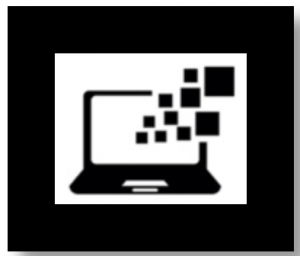 Document it! – Communicating and making learning visible
Document it! – Communicating and making learning visible
What is Documentation?
Documentation is an authentic form of assessment that can be faster than a test, more powerful than a report card, and able to demonstrate learning in leaps and bounds. Creativity as a superpower can best be displayed and valued through formal documentation strategies. Documentation of learning can take on many forms from a bulletin board to a website, to student-made books that are displayed around the room. This form of communication tells a story, describes an experience, and/or provides evidence of meeting standards in the classroom. Various forms of evidence should be collected that include photographs and video clips, descriptions and transcripts of experiences and events, and other pertinent artifacts that make the learning become visible to the learner and others in the room or school such as families, administrators, and other community members.
To document the learning that took place in the initial OurPlace outing, and to understand further the benefits of this type of project, the group needs to begin the process of communicating their ideas. Together, they should determine the platform for sharing the OurPlace. The platform may be electronic such as a website (digication, google sites, weebly.com, wordpress.com or some other free website that has privacy permissions), or it may be a new Facebook group, an electronic/interactive bulletin board (glogster.com) or an eBook (storyjumper.com). Physical documentation is also a possibility. Physical platforms include bulletin board areas, documentation panels (portable bulletin boards such as a trifold), or even a large self-made book to post the progress of the project. Whatever platform is selected, the group needs to organize who is responsible for which part. There are several roles/jobs that can be associated with the documenting process. Once these are set, the fun begins in highlighting the process and making learning visible.
Communication Thoughts
The documentation process provides a vehicle to reflect, showcase, and value learning (Seitz, 2007, 2018). By documenting the experience, the learning is internalized within each participant and then communicated to others. Using various forms of public documentation platforms, the learning becomes authentic and accessible to others. Learning how to communicate clearly and articulate ideas succinctly will support a positive learning environment as well as deep-rooted learning and memorable experience.
Summary
Creativity can be everyone’s superpower. To find one’s own superpower and to nurture others, we must have time to play with materials, time to reflect on our own experiences, and time to talk about this with others. Once we begin to understand the role of creativity in ourselves, we can then help our students become more creative learners. Thinking about ways to integrate the arts into other areas of the curriculum is one way to promote both confidence and competence by using materials to teach in a holistic and integrated way.
Book References
Miller, J. P. (2007). The Holistic Curriculum. University of Toronto press.
Resnick, M. (2017). Lifelong Kindergarten: Cultivating Creativity Through Projects, Passion, Peers, and Play. MIT Press.
Seitz, H. (2008). The power of documentation in the early childhood classroom. YC Young Children, 63(2), 88.
Seitz, H (2018). The power of documentation. In Bohart, H., Procopio, R. (Eds.). (2018). Spotlight on Young Children: Observation and Assessment. National Association for the Education of Young Children.
Trilling, B., & Fadel, C. (2012). 21st Century Skills: Learning for Life in our Times. John Wiley & Sons.
Trivizas, E., Oxenbury, H., & Morris, J. (1993). The Three Little Wolves and the Big Bad Pig. Egmont.
Viereck, G. S. (1929). What life means to Einstein. The Saturday Evening Post, 26, 17.
Websites
Digication – https://www.digication.com/
Facebook – https://www.facebook.com
Forbes Magazine – https://www.forbes.com/sites/ellevate/2018/08/06/the-skills-you-need-to-succeed-in-2020/#73f7f8df288aFuture Work Skills 2020 report – http://www.iftf.org/our-work/global-landscape/ .
Glogster – https://www.glogster.com
Googlesites – https://sites.google.com/new
Merriam Webster Dictionary – https://www.merriam-webster.com/dictionary/verb
Mission Podcast blog- https://medium.com/the-mission/3-steps-to-discover-your-superpowers-64516d3673ca
Storyjumper – https://storyjumper.com
Weebly – https://www.weebly.com
Wordpress – https://wordpress.com

